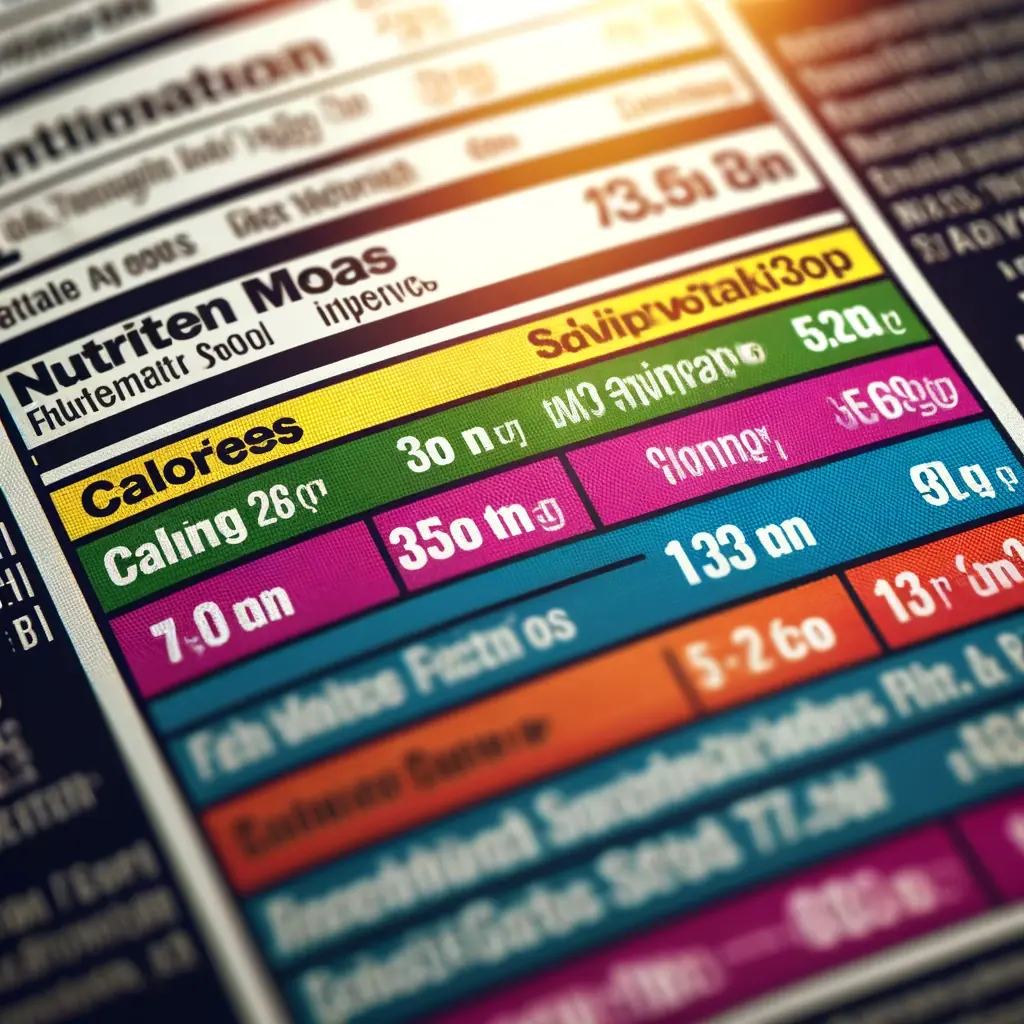Do you think nutrition labels look like mumbo jumbo too? Let us help you decipher that in this article!

Reading nutrition labels can be confusing, but it’s an essential skill for making healthier food choices. Here’s a guide to help you understand them:
Serving Size
The serving size is the first piece of information on a nutrition label and is the basis for all the nutritional information listed. Be mindful of how many servings you are consuming, as it directly affects the total intake of calories and nutrients.
Example: If the serving size is 1 cup and you eat 2 cups, you need to double the nutritional values listed on the label.
Calories
This number indicates the amount of energy you get from one serving of the food. Monitoring your calorie intake is crucial for weight management.
Example: If a food item has 250 calories per serving and you consume two servings, you will intake 500 calories.
Nutrients to Limit
Saturated Fat, Trans Fat, Cholesterol, and Sodium: High levels of these nutrients can increase the risk of chronic diseases such as heart disease, high blood pressure, and stroke. Aim to keep their intake low.
Example: Look for foods with 5% or less of the daily value of these nutrients per serving.
Nutrients to Get More Of
Dietary Fiber, Vitamins, and Minerals: These are essential for maintaining good health. Ensure you are getting enough of these nutrients, as they can improve digestion, bone health, and overall well-being.
Example: Choose foods that are high in dietary fiber, vitamin D, calcium, iron, and potassium. Foods with 20% or more of the daily value of these nutrients per serving are considered high in those nutrients.
Daily Value Percentages
These percentages tell you how much a nutrient in a serving of food contributes to a daily diet. They are based on a 2,000-calorie diet, which may be higher or lower depending on your calorie needs.
Example: If a food item has 15% of the daily value for calcium, it means that one serving provides 15% of the calcium you need each day.
Understanding the Ingredients List
Ingredients are listed in descending order by weight. The first few ingredients are the most predominant in the product. Understanding the ingredients can help you identify hidden sugars, unhealthy fats, and other additives.
Example: If sugar is listed as one of the first ingredients, the product is likely high in added sugars.
Sugar Content
Check both the total sugars and added sugars on the label. Added sugars are those that are added during processing and are not naturally occurring in the food.
Example: Choose foods with low added sugars to reduce the risk of obesity, type 2 diabetes, and heart disease. Aim for less than 10% of your daily calories from added sugars.
Protein
Protein is essential for building and repairing tissues, and it helps keep you full longer. Look for foods with a good amount of protein, especially if you are active or trying to build muscle.
Example: Foods like lean meats, beans, and legumes are good sources of protein.
Fats
Not all fats are bad. Unsaturated fats, such as those found in nuts, seeds, and fish, are beneficial for heart health. However, limit saturated and trans fats.
Example: Avocados and olive oil are healthy sources of unsaturated fats.
Fiber
Dietary fiber is crucial for digestive health and can help prevent certain diseases. Foods high in fiber can also help with weight management as they keep you feeling full longer.
Example: Whole grains, fruits, and vegetables are excellent sources of dietary fiber.
Tips for Making Healthier Choices
Compare Products
Use the nutrition label to compare similar products and choose the healthier option.
Example: Compare two types of cereal by checking their fiber and sugar content, and choose the one with more fiber and less sugar.
Look for Nutrient Claims
Claims such as “low fat,” “high fiber,” or “reduced sodium” can guide you toward healthier options. However, always check the nutrition label to confirm these claims.
Example: A product labeled “low sodium” should have 140 mg of sodium or less per serving.
Watch Out for Portion Sizes
Be aware of the portion sizes listed on the label and adjust your intake accordingly.
Example: If a package contains multiple servings, be mindful of how much you are consuming to avoid overeating.
Limit Processed Foods
Processed foods often contain high levels of unhealthy fats, added sugars, and sodium. Opt for whole, unprocessed foods when possible.
Example: Choose fresh fruit over canned fruit with added syrup.
Conclusion
Understanding nutrition labels is a key step in making informed and healthier food choices. By paying attention to serving sizes, calories, and nutrient content, you can better manage your diet and support your overall health. Remember to compare products, watch portion sizes, and opt for nutrient-dense foods to maintain a balanced diet.
